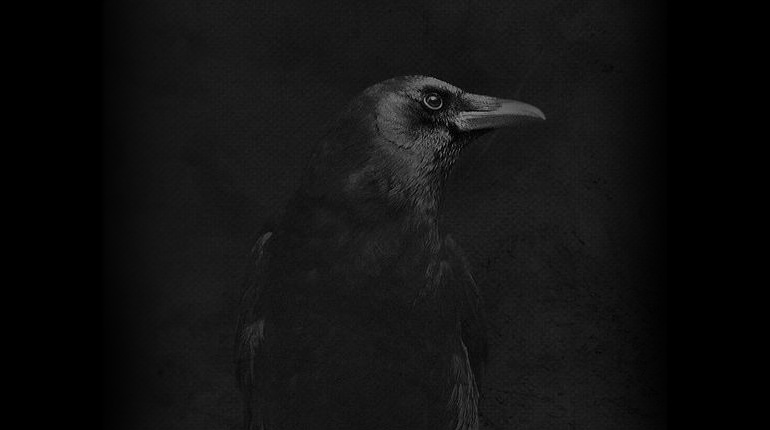One of the most confusing aspects of printing is the many different uses of black. Due to the way the print process works, using blacks in printing can result in many different shades of black and grey. In this article we aim to explain the different ways black can be used, also the best ways to keep all your blacks the same if this is what you desire.
Why are there different blacks in printing?
In the CMYK print process all colours are made by mixing cyan, magenta, yellow and black (key-plate) K. These colours can be used on their own as a solid colour, or mixed by printing separate layers on top of one another. When any colour is analysed using graphics program separate CMYK values can been seen as a number from 0 to 100%. In the image below you can see the orange is made up of C, 0% M, 58.32% Y, 100% K, 0%
For more information on CMYK Colours For Print click here:
What is black in CMYK?
There are infinite ways to make black using CMYK, as each colour has 100 different values % and many of these will add up to make some sort of black. So the question should be, what are the most common blacks used for printing?
True Black vs Rich Black
What is true black? True black or plain black is simply a value of 100% K, 0% CMY. True black still appears black on screen but when printed will produce a dark grey/black. Although when printed 100%K will produce a black it is not the darkest black you can print.
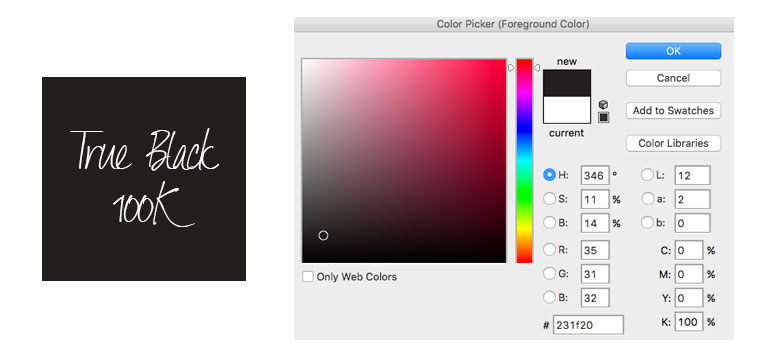
What is rich black? Designers and printers achieve a rich black by adding in percentages of the other colours in CMYK. The rich black values in the picture below come from the old Adobe Photoshop. However Photoshop now converts RGB blacks to CMYK black in different ways, depending on the colour profile selected. It does not really matter which rich black you use for your design as long as all blacks in the design are the same. Every different printer will use a different rich black some use a 60% cyan 40% magenta 40% yellow 100% black (k)

True/Plain Black vs Rich Black

Other blacks commonly used in printing.
There are infinite ways of creating blacks for printing. But some commonly used blacks are warm blacks and cool blacks. These are achieved by simply adding in different percentages of the CMY inks. Below are mix gradients of CMYK.

What is registration black used for?
Registration black is 100% cyan, 100% magenta, 100% yellow and 100% black (K). It is achieved by printing 100% of all the colours on top of each other. Registration marks are used to make sure all of the printing plates are aligned. Registration black should never be used in your design, at it lays too much ink onto the paper.
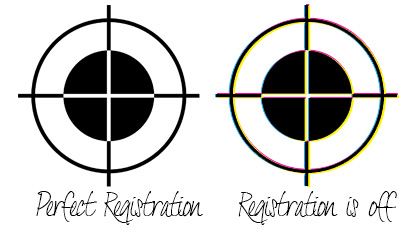
When should true/plain black be used?
Good question, with all this talk of rich black, warm black and cool black, you maybe thinking is true black absolute? No, far from it, in fact we use true black, and shades of true black all of the time. They are used for thin black or grey lines and also thin black or grey text. The majority of the time a percentage of black makes for a better quality grey full stop. There are other factors that have an effect of the quality of 4 colour black like print screen angle but we will talk more about this in another blog post.
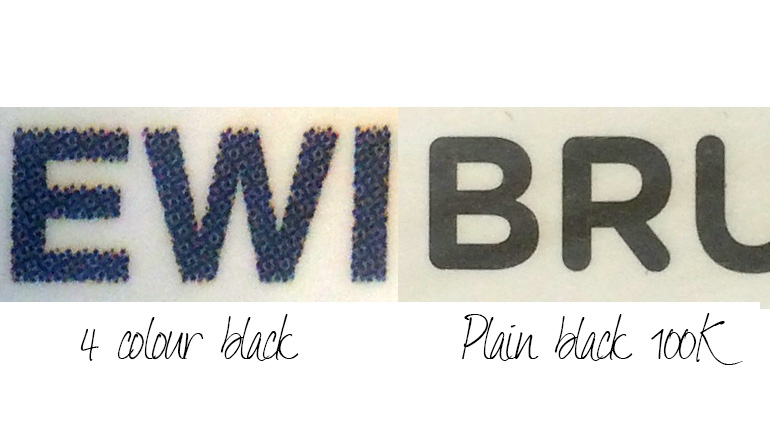
Even with very precise print registration, thin lines or thin text made up from 4 colours will not look very crisp. Below are test prints using very thin lines with a 4 colour CMYK black and true black.
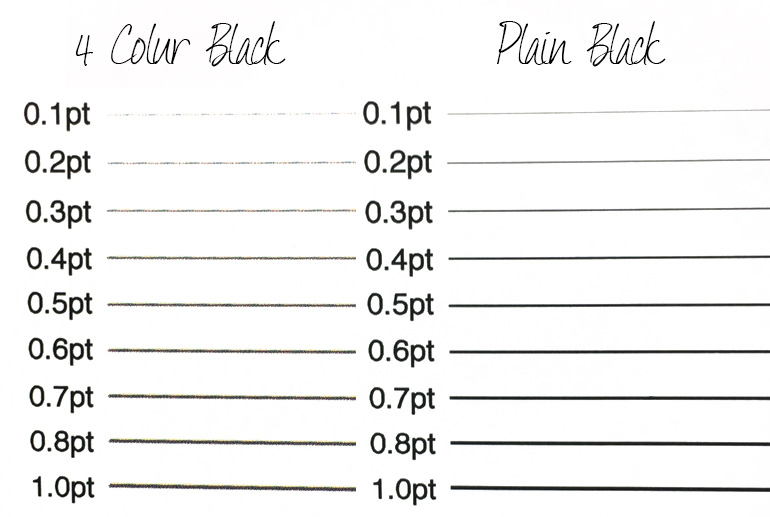

Using blacks in printing.
It is import any designers understand how the print process works, before they design for print. Make sure all your blacks have the same CMYK value. They my all look the same on your RGB monitor but once converted to CMYK and printed you maybe left with conflicting blacks.

